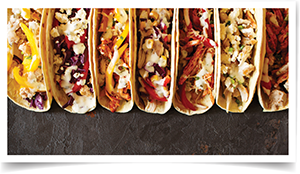 People love road trips.
People love road trips.
Ironically, the most famous road trip in history turned out to be nothing but terrible memories. Those memories were so profound that they eventually revolutionized the U.S. highway system, reshaped the American housing landscape and turned a small, under-appreciated retail channel into the largest in the country.
The tale begins more than a century ago in 1919, a year after the end of World War I. The U.S. War Department decided to roll out a 3,200-mile cross-country caravan from Washington, D.C., to San Francisco to test the growing capabilities of the U.S. auto industry and the roads central to continued growth. A young Army lieutenant, Dwight Eisenhower, thought the trip would be a “genuine adventure” and signed up. The experience turned out to be horrible 62-day cross-country slog of broken-down vehicles, dead-end roads, mud, quicksand and overall misery. But, oh those memories!
In 1964, self-serve fueling was introduced and allowed convenience stores to sell fuel cheaper than traditional branded service stations.”
INTERSTATES AND SUBURBS
Eisenhower held onto those memories, and when he became the president of the United States nearly 40 years later, he created the country’s interstate system by signing the Federal-Aid Highway Act of 1956, which helped ensure future road trips were much more pleasant experiences. More importantly, it reshaped convenience.
The impact of the Federal-Aid Highway Act was almost immediate. Better roads expanded the suburbs. With the population more spread out, grocery stores in downtown areas moved further from people’s homes, but there weren’t many viable options for away-from-home dining. Convenience stores were considered somewhat of a novelty, with only a few hundred stores scattered in warm weather locations.
As more people moved to the suburbs, these smaller convenience store formats became essential for 9-to-5 commuters. People could easily pick up milk, bread and eggs on their way home, and the shopping experience was faster than at grocery stores. Convenience stores also had the luxury of being open later—like from 7 a.m. to 11 p.m.—while most grocery stores closed at 5 p.m.
Consumers embraced the ease of speed of these smaller retail outlets, and convenience stores quickly expanded. The first c-stores in cold-weather markets popped up in Denver in 1957 and in Washington, D.C. The stores, usually called “drive-ins” or “bantams,” got their name that year, defining not what they looked like but what they offered: convenience.
As more people moved to the suburbs, these smaller convenience store formats became essential for 9-to-5 commuters.
SELF-SERVICE
Next was gasoline. In 1964, self-serve fueling was introduced and allowed convenience stores to sell fuel cheaper than traditional branded service stations (read “The History of Self-Fueling”). The growth of self-serve at the pump also led to other self-serve innovations. By the mid-1960s, 7-Eleven introduced self-serve coffee and fountain soda, and by decade’s end the first ATM was introduced. Today, apps allow consumers to order groceries and schedule at-home deliveries. It could be argued that all of these conveniences, and the self-service of the internet itself, were facilitated by the growth of the highway system. Remember what the internet was originally called in the 1990s? That’s right, the information superhighway.
The U.S. highway system also revolutionized what convenience stores sold. In those early years, they sold packaged items that had a long shelf life, mostly because stores would receive deliveries once every week or two. Perishable items weren’t an option, and the upscale food offerings that you see in convenience stores today would not be possible without a highway system.
 Remember Clark Griswold saying in the 1983 movie “National Lampoon’s Vacation,” “I’m so hungry I could eat a sandwich from a gas station”? That joke doesn’t work for anyone who has been to a convenience store during the past few years. Today, it’s common to see fresh food, deli offers and other perishables in convenience stores. Foodservice accounts for nearly 1 in 4 dollars spent within the channel and is the fastest growing in-store segment within the industry.
Remember Clark Griswold saying in the 1983 movie “National Lampoon’s Vacation,” “I’m so hungry I could eat a sandwich from a gas station”? That joke doesn’t work for anyone who has been to a convenience store during the past few years. Today, it’s common to see fresh food, deli offers and other perishables in convenience stores. Foodservice accounts for nearly 1 in 4 dollars spent within the channel and is the fastest growing in-store segment within the industry.
Despite the enormous growth of the convenience store industry, there were some winners and losers. An entrepreneur in Kentucky who owned three properties that offered fuel, lodging and food and specialized in fried chicken was forced to close his operations after highway bypasses rendered the locations useless. So, Harland Sanders decided to focus on his recipe of seven herbs and spices and launched a fast-food empire: Kentucky Fried Chicken.
Others saw the highway system as a way to expand. Stuckey’s, famous for its pecan log roll, grew from small, roadside stands to hundreds of larger stores that sold Texaco fuel. After downsizing due to a series of acquisitions, Stuckey’s has rebounded in recent years under new leadership, with a focus on celebrating—you guessed it—road trips.
The upscale food offerings that you see in convenience stores today would not be possible without a highway system.
THE FUTURE OF FUELING
Today, there are more than 148,000 convenience stores in the United States. There are more convenience stores than grocery, drug, dollar and club stores combined. They sell an estimated 80% of the fuel purchased in the country, and despite a decrease in consumption over the past five years, fuel continues to attract customers.
Big changes are again afoot that could reshape fueling. More than 60 years after President Eisenhower created the interstate system, the Biden Administration is focusing on its own vision and reimagining how vehicles are fueled, setting a goal to have a national network of 500,000 public electric vehicle charging stations by 2030.
There are big issues to address that would make this goal a reality. How can charging locations like convenience stores affordably acquire electricity and charge the customer for it? How will vehicle production ramp up to create demand for charging, when less than 1% of the 276 million registered vehicles in the U.S. are EVs, and only 3% of new vehicle sales are EVs? How can EV charging at convenience stores continue to increase? And how will road taxes, currently funded by gasoline excise taxes, be assessed for vehicles that don’t contribute the taxes that go toward road construction, maintenance and repairs?
How can EV charging at convenience stores continue to increase? And how will road taxes, currently funded by gasoline excise taxes, be assessed for vehicles that don’t contribute the taxes that go toward road construction, maintenance and repairs?
The biggest factor of the Biden Administration’s EV charger goal is whether it will make life more convenient. Eisenhower’s grand vision was ultimately about making it convenient to travel the country, whether for commerce or for fun. Reshaping the fueling infrastructure will need to include embracing convenience. It will be interesting to see if this ambitious goal can be met, and which innovations will have a bigger impact on our everyday lives. Who could honestly say they saw all the amazing possibilities that were unlocked from the highway system?